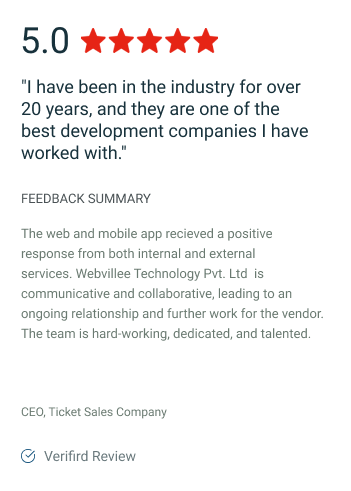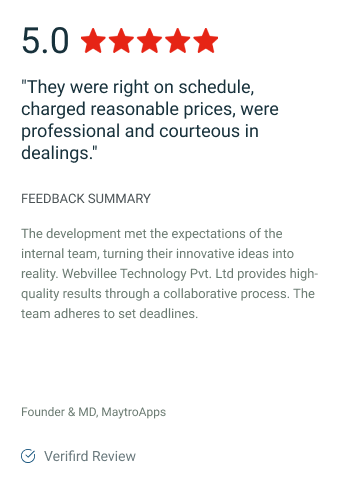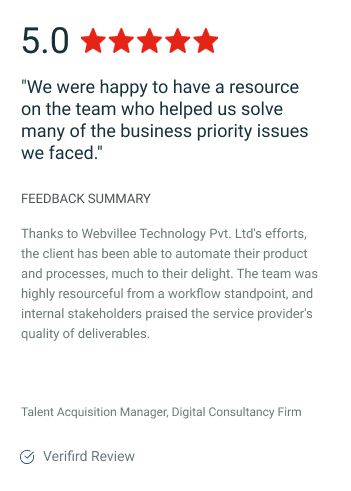Product modernization isn’t just about staying current. It’s about making sure what you offer aligns with how people work, buy, and solve problems today and tomorrow. Legacy systems, rigid platforms, and outdated experiences don’t just slow things down. They limit your ability to lead.
This 5 step blueprint outlines a clear, strategic path for modernizing your products in 2025. It’s designed to help you move with precision, not chaos, toward solutions that are flexible, efficient, and built to scale.
Let’s break it down simply and practically.
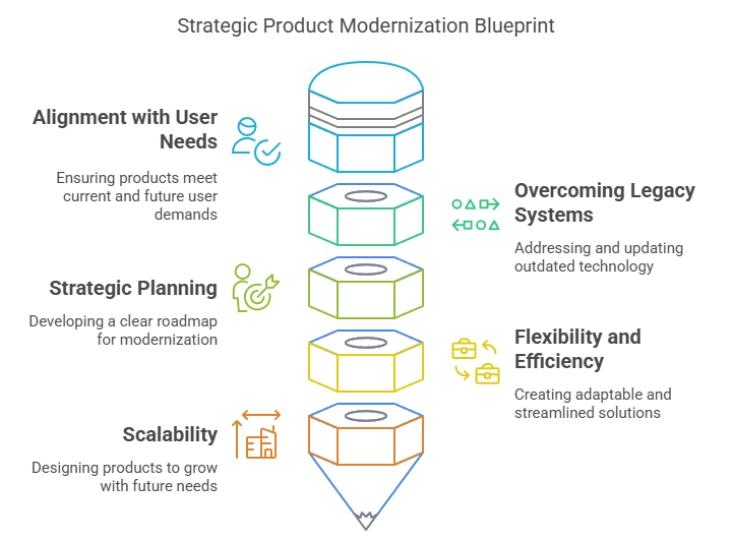
1. Assess Your Product’s True Value and Limitations
Modernization should start with clarity, not assumptions.
This phase is about understanding what your product actually delivers and where it’s falling short. Too often, companies dive into updates without asking whether what they’re fixing is even worth keeping.
What to do:
- Inventory your features. Which are heavily used? Which are ignored? Let usage data guide you.
- Talk to your customers. Direct feedback often reveals friction points and surprising value-adds.
- Evaluate your tech stack. Are there bottlenecks in performance, updates, or integrations?
Why it matters:
Without this reality check, you might waste resources improving outdated features or miss critical opportunities to strengthen what’s already working. Modernization isn’t about sweeping change, it’s targeted, strategic refinement.
This is also a crucial first step in any forward-looking Product Engineering initiative, where understanding the product’s foundations leads to smarter upgrades.
2. Align Modernization with Business Strategy
Modernization without alignment is just surface-level work.
A modern product must support where your business is headed, not just look better or run faster. That means every feature, update, and workflow needs to tie back to a core business goal.
What to do:
- Clarify your objectives. Are you trying to enter new markets? Reduce churn? Increase operational speed?
- Collaborate across functions. Input from product, sales, marketing, and support ensures alignment and adoption.
- Document KPIs. Know how you’ll measure success before you start building.
Why it matters:
When modernization serves your long-term goals, the ROI becomes clear, not just in product metrics but in revenue, reach, and reputation. In many cases, this stage overlaps with broader initiatives like implementing a Product Engineering service to support evolving tech and business needs.
3. Choose the Right Technology Stack for Tomorrow
Outdated infrastructure slows everything down.
You don’t want to modernize your product on top of fragile, high-maintenance systems. This is the time to reassess your tools and build a platform that supports innovation, not one that requires constant patching.
What to do:
- Evaluate cloud-native options. Look for tools that scale easily, integrate well, and offer long-term support.
- Prioritize flexibility. Avoid tools that lock you into rigid architectures or outdated programming models.
- Involve your developers. They’ll know what’s efficient, what’s risky, and what future-proofing means.
Why it matters:
Your tech stack determines how quickly you can ship, how easily you can adapt, and how confidently your team can move. Choose wisely, and you’re not just modern, you’re prepared.
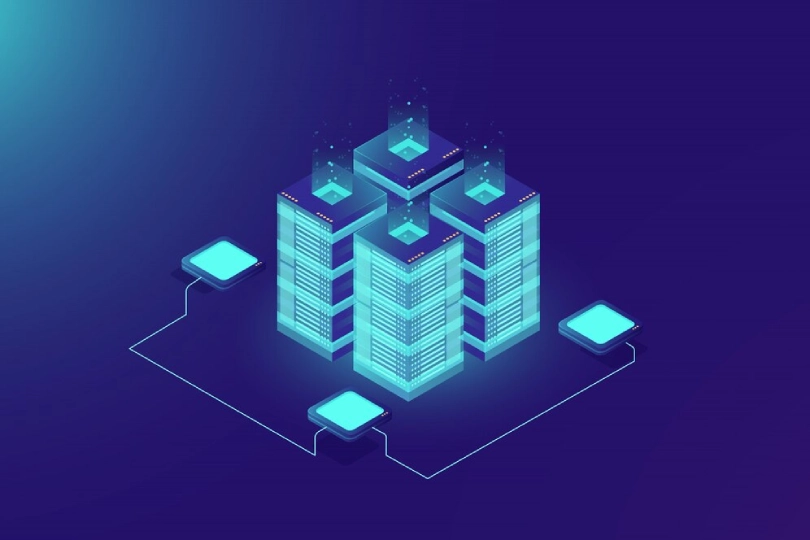
4. Redesign the User Experience from the Ground Up
A product isn’t truly modern unless the user feels it.
This isn’t about flashy interfaces, it’s about functionality, clarity, and reducing friction. A sleek UI is meaningless if the experience confuses or frustrates users.
What to do:
- Map out user journeys. Understand how people interact with your product from start to finish.
- Simplify. Remove extra steps, consolidate redundant features, and make things intuitive.
- Test constantly. Use real users, early and often. Their input is more valuable than internal assumptions.
Why it matters:
User experience is what customers judge, recommend, and remember. A well-modernized product doesn’t just run better, it feels better to use.
5. Build a Scalable Launch and Iteration Framework
A launch is just the beginning.
Too many companies treat modernization like a one-time event. In reality, you need a system that allows for frequent, meaningful iteration, with feedback loops and agile delivery baked in.
What to do:
- Plan a phased rollout. Test with segments of users, monitor results, and adjust before full deployment.
- Support onboarding. A modernized product may change workflows, guide users through it.
- Track and improve. Use analytics to monitor adoption and uncover where people struggle or disengage.
Why it matters:
Modern products live and grow. With the right rollout and feedback systems, you’ll build momentum, not headaches, as you push forward. At this point, many organizations begin to see the benefits of layering in a broader Digital Transformation service to scale impact across teams and departments, not just within a single product.
Ready to Modernize with Confidence?
Product modernization in 2025 is a strategic decision, one that demands clarity, speed, and deep alignment with your business. Webvillee helps companies rethink and rebuild their products to meet modern demands without the chaos.
From technology assessment to UX redesign and go-to-market strategy, Webvillee works with you every step of the way. No buzzwords. Just practical execution, smart design, and meaningful results.
Have questions or ready to start? Get in touch with us to explore how we can help modernize your product with clarity and confidence.



